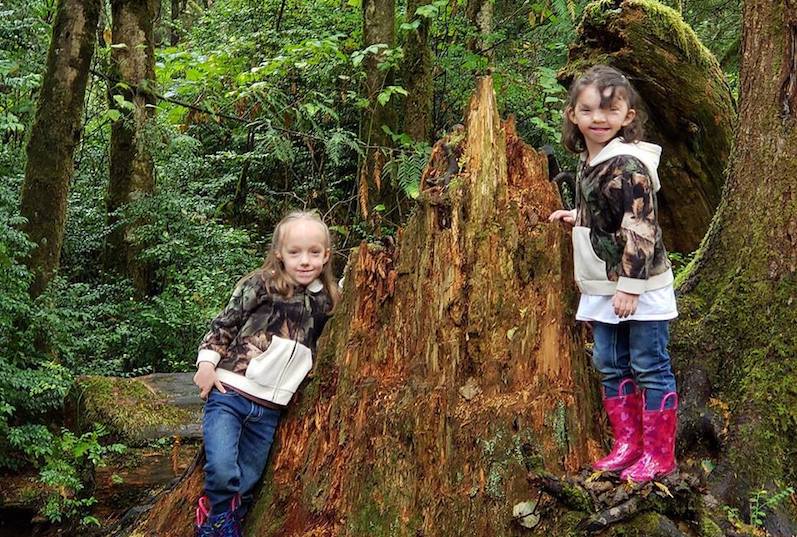Violet is blossoming five years after Tessier cleft surgery

In October 2014, Violet and her parents traveled from their home in rural Oregon to Boston Children’s Hospital for a life-changing surgery. Violet, who was born with an extremely rare and serious craniofacial anomaly, called a Tessier cleft, needed an operation to close the gap in her facial bones. After nine hours in the surgical suite, Dr. John Meara, plastic surgeon-in-chief, and Dr. Mark Proctor, neurosurgeon-in-chief, were able to reshape Violet’s face and transform her life.
Watch Violet’s whole story in three parts; her first arrival in Boston, using 3D models to plan her surgery, and her journey into the operating room.
Violet will eventually need more surgery, but for now, she’s a busy and rambunctious 6-year-old, who loves to keep up with her twin sister, Cora.
On track in first grade
“It’s been a busy year,” says her mom, Alicia. “She did well in kindergarten and recently started first grade with Cora. They’re both right on track with reading and writing, though Violet is left-handed, so we’ve had a few challenges with that.”
Alicia says Violet and Cora both love being outside, animals, camping, crafting, going to the beach, and riding horses. They also keep the rest of the family laughing. “They crack me up all the time with the things that come out of their mouths.”
Although Violet and Cora are the youngest of six children, they rule the roost at home. “The twins are the bosses,” she laughs. “Our older kids don’t realize how well they’re being worked over.”

A smile that wins hearts
Violet will always look a little different, but she’s just like any other happy 6-year-old. “People sometimes don’t know how to react when they see her,” says Alicia. “But she’s got such a great smile, she just smiles and that’s the ice breaker. There’s a lot of personality in a very little package.”
Because the family lives in a small town, Violet is well known. “Everywhere we go, everyone knows Violet and everyone asks about her,” says Alicia.

But even with Violet’s near-celebrity status, the family sometimes encounters unkind remarks. They try to handle these moments with grace. “The more exposure people have to Violet, the more they see her for who she is and don’t focus on her differences,” says Alicia. “She makes everyone around her a better person. People spend five minutes with her and they can’t help but love her.”
Happy and enjoying life
Eventually, Violet will need to return to Boston for more surgery, but for now she’s happy and enjoying life. “She’s been though more than most adults and has taken it all with a smile,” says Alicia. “Her outlook and personality just shine. She amazes me every day.”
Learn more about the Craniofacial Program.
Related Posts :
-

Thanks to Carter and his family, people are talking about spastic paraplegia
Nine-year-old Carter may be the most devoted — and popular — sports fan in his Connecticut town. “He loves all sports,” ...
-

What orthopedic trauma surgeons wish more parents knew about lawnmower injuries
Summer is full of delights: lemonade, ice cream, and fresh-cut grass to name a few. Unfortunately, the warmer months can ...
-

A fall from a swing uncovers a rare cervical spine condition: Charlotte’s story
If it were any other year, Charlotte Gillis would have celebrated her 10th birthday in mid-July with a big party. ...
-

MRI could reduce the mystery of brachial plexus injuries in infants
About one in 1,000 children are born with brachial plexus birth injury (BPBI), upper extremity weakness or paralysis resulting from trauma ...





